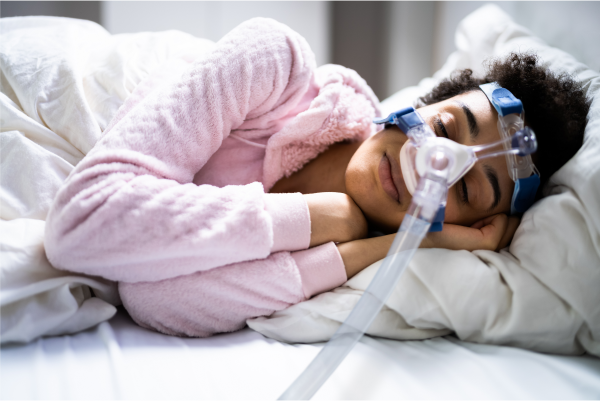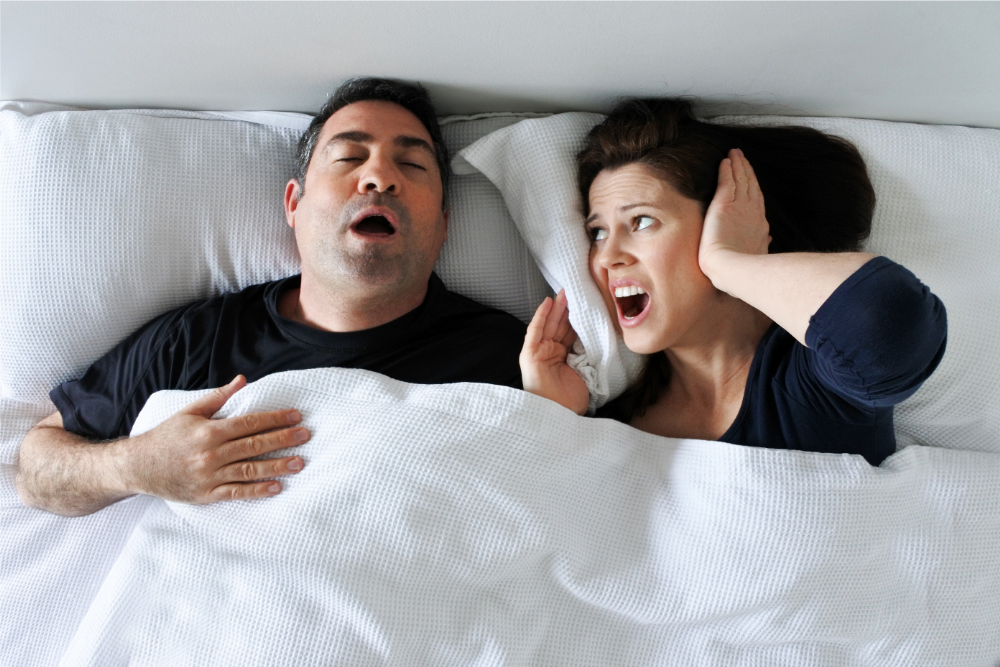Many people associate snoring with deep sleep, but did you know it could be a sign of a serious sleep disorder? While occasional snoring is common, persistent and loud snoring may indicate obstructive sleep apnea (OSA), a condition where breathing repeatedly stops and starts during sleep. Understanding the relationship between snoring and sleep apnea is crucial for identifying potential health risks and seeking appropriate treatment. Let’s delve deeper into whether snoring can indeed cause sleep apnea and explore the implications for overall sleep quality and health.
Snoring: The Basics
Snoring is the noisy sound that occurs when the airway narrows or becomes blocked. The restricted airflow causes the tissues in the throat to vibrate during sleep. It’s a common occurrence, affecting millions of people worldwide, and can vary in intensity from a soft murmur to a loud rumble.
Snoring vs. Sleep Apnea
While snoring itself is not necessarily harmful, it can be a symptom of sleep apnea. These pauses, known as apneas, can last for seconds to minutes and occur multiple times throughout the night. Untreated sleep apnea can lead to other health conditions that impact more than just the ability to sleep comfortably and breathe normally.
Recognizing the Signs of Sleep Apnea
Loud and Persistent Snoring: Loud, chronic, and disruptive snoring is a hallmark symptom of sleep apnea. This type of snoring is often disruptive to the well-being of others in the sleeping space.
Pauses in Breathing: Intermittent interruptions in breathing can lead to gasps and choking from the disrupted airflow.
Excessive Daytime Sleepiness: Lingering tiredness or fatigue during the day, despite getting a full night’s sleep, is common with a lower nocturnal respiratory rate.
Morning Headaches: Morning headaches associated with a decrease in sleep quality and snoring that occur at least 15 days a month are indicative of sleep apnea. Keep in mind that headaches can also occur as clusters and migraines the longer sleep apnea remains untreated.
Dry Mouth: Snoring leads to mouth breathing, which dries out the moist membranes in the mouth. It also decreases salivary flow, which can negatively impact oral health, leading to cavities, periodontal disease, gingivitis, and other mouth disorders.
Throat Soreness: A sore throat is a common side effect of dryness and the constant vibrations in the throat from snoring. Also, deep neck infections related to esophageal and upper respiratory disorders can cause throat soreness.
Restless Sleep: Frequently tossing and turning during sleep or waking up frequently throughout the night can be a sign of disrupted sleep patterns associated with sleep apnea.
The Connection Between Snoring and Sleep Apnea:
Snoring is a common symptom of sleep apnea, particularly in obstructive sleep apnea (OSA), the most prevalent form of the disorder. OSA occurs when the muscles in the throat relax excessively during sleep, causing the airway to become partially or completely blocked. As air struggles to pass through the narrowed airway, it vibrates against the relaxed tissues, resulting in snoring.
Risk Factors for Sleep Apnea
Sleep apnea is a potentially serious sleep disorder characterized by pauses in breathing or shallow breaths during sleep. Several risk factors increase the likelihood of developing sleep apnea, including the following:
- Enlarged tonsils or adenoids, common in children, can also block airflow during sleep.
- Age plays a role, as sleep apnea is more common in older adults due to changes in muscle tone and increased risk of throat obstruction.
- Gender is another factor, with men being more likely to develop sleep apnea than women, although the risk in women increases after menopause.
- Nasal congestion or structural abnormalities in the airway, such as a deviated septum or enlarged tonsils.
- Family history also plays a role, indicating a genetic predisposition to the condition.
- Certain anatomical factors, such as a narrow airway, a thick neck circumference, or a recessed chin, can contribute to airway obstruction during sleep.
- Obesity or excess weight can lead to fat deposits around the upper airway and contribute to airway obstruction.
- Lifestyle factors like smoking, alcohol consumption, and sedative use can relax throat muscles, exacerbating sleep apnea symptoms.
Understanding these risk factors is crucial for early detection and management of sleep apnea to prevent complications and improve overall health.
Diagnosis and Treatment Options

Treatment options for sleep apnea aim to open the airway and improve breathing during sleep. Depending on the severity and underlying cause of sleep apnea, treatment options may include:
Continuous Positive Airway Pressure (CPAP) Therapy: CPAP therapy involves wearing a mask connected to a machine that delivers a constant flow of air to keep the airway open during sleep
Oral Appliance Therapy: Custom-fitted oral appliances can help reposition the jaw and tongue to prevent airway obstruction in mild to moderate cases of sleep apnea.
Pillar Implant Procedure: The Pillar Implant Procedure involves inserting small implants into the soft palate to stiffen and reduce tissue vibration, alleviating sleep apnea symptoms.
Lifestyle Modifications: Making lifestyle changes such as losing weight, quitting smoking, avoiding alcohol before bedtime, and sleeping on your side can improve symptoms of sleep apnea.
Surgery: Septoplasty, functional rhinoplasty, and other surgical interventions may be considered to remove excess tissue, correct nasal abnormalities or address anatomical abnormalities contributing to airway obstruction.
Conclusion
Snoring can indeed be a sign of sleep apnea, a potentially serious sleep disorder that requires prompt evaluation and treatment by a specialist. By recognizing the signs and symptoms of sleep apnea and seeking timely intervention, individuals can enjoy better sleep quality, improved daytime functioning, and reduced risk of associated health complications.
If you or someone you know exhibits signs of sleep apnea, don’t hesitate to consult an ENT in Encino for an evaluation and treatment. Your path to better sleep starts with understanding the connection between snoring and sleep apnea.

